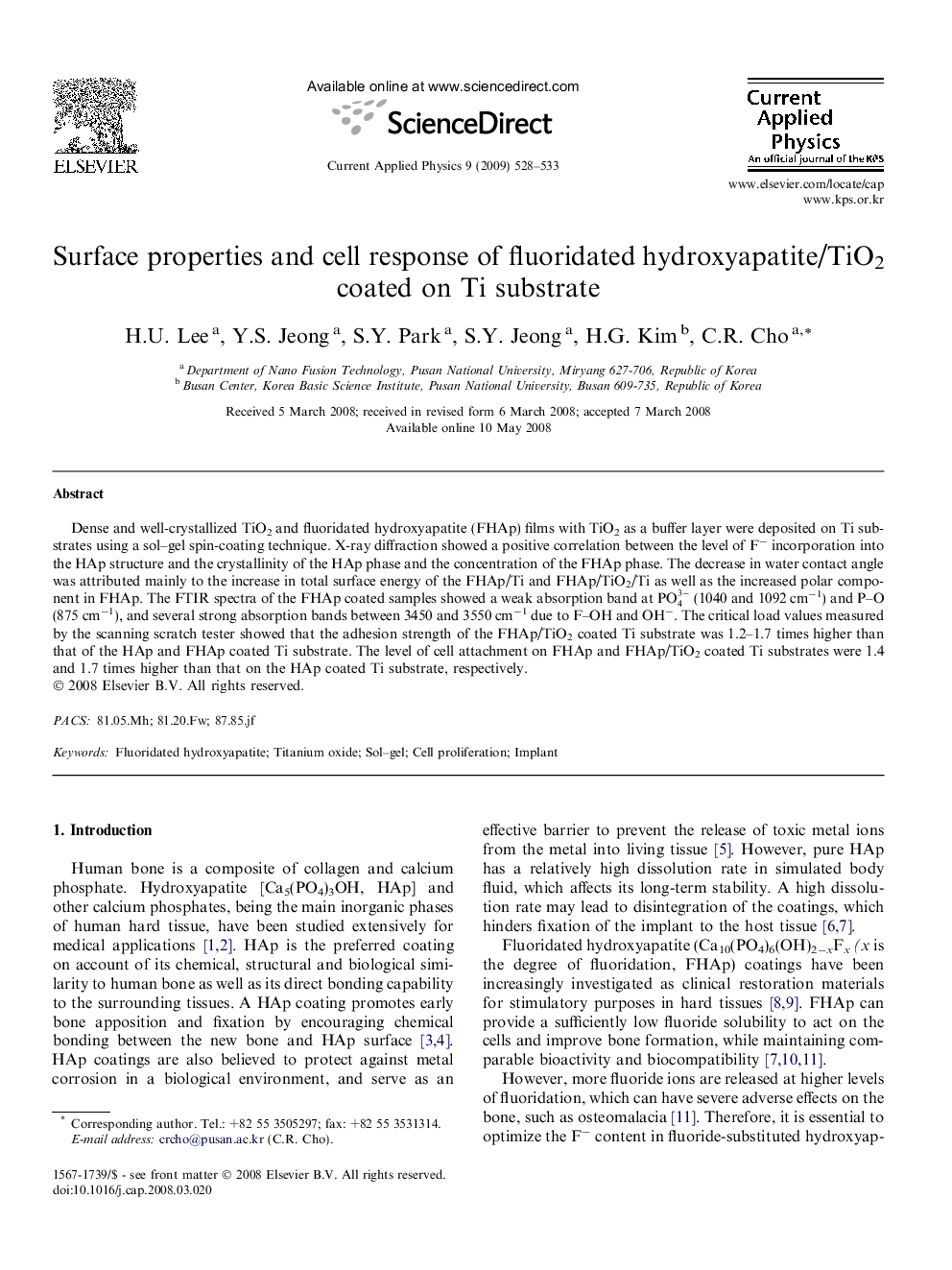| Article ID | Journal | Published Year | Pages | File Type |
|---|---|---|---|---|
| 1787178 | Current Applied Physics | 2009 | 6 Pages |
Abstract
Dense and well-crystallized TiO2 and fluoridated hydroxyapatite (FHAp) films with TiO2 as a buffer layer were deposited on Ti substrates using a sol-gel spin-coating technique. X-ray diffraction showed a positive correlation between the level of Fâ incorporation into the HAp structure and the crystallinity of the HAp phase and the concentration of the FHAp phase. The decrease in water contact angle was attributed mainly to the increase in total surface energy of the FHAp/Ti and FHAp/TiO2/Ti as well as the increased polar component in FHAp. The FTIR spectra of the FHAp coated samples showed a weak absorption band at PO43- (1040 and 1092Â cmâ1) and P-O (875Â cmâ1), and several strong absorption bands between 3450 and 3550Â cmâ1 due to F-OH and OHâ. The critical load values measured by the scanning scratch tester showed that the adhesion strength of the FHAp/TiO2 coated Ti substrate was 1.2-1.7 times higher than that of the HAp and FHAp coated Ti substrate. The level of cell attachment on FHAp and FHAp/TiO2 coated Ti substrates were 1.4 and 1.7 times higher than that on the HAp coated Ti substrate, respectively.
Keywords
Related Topics
Physical Sciences and Engineering
Physics and Astronomy
Condensed Matter Physics
Authors
H.U. Lee, Y.S. Jeong, S.Y. Park, S.Y. Jeong, H.G. Kim, C.R. Cho,
